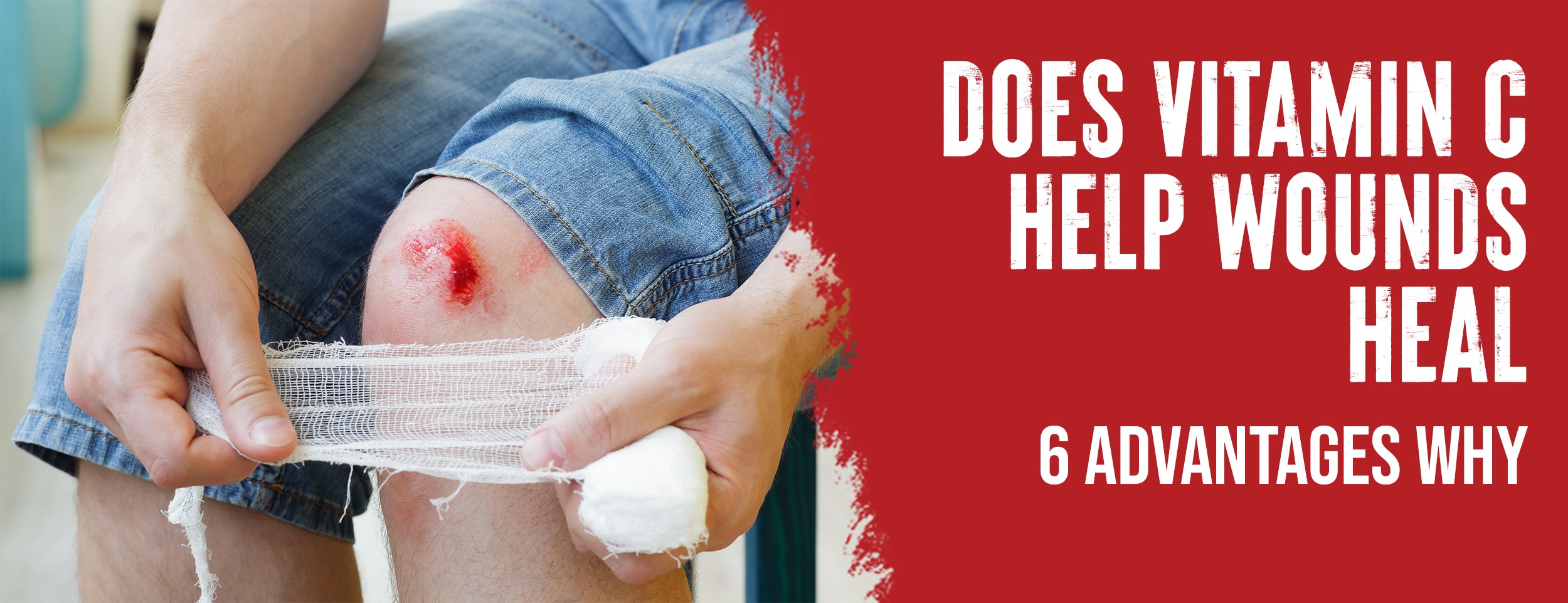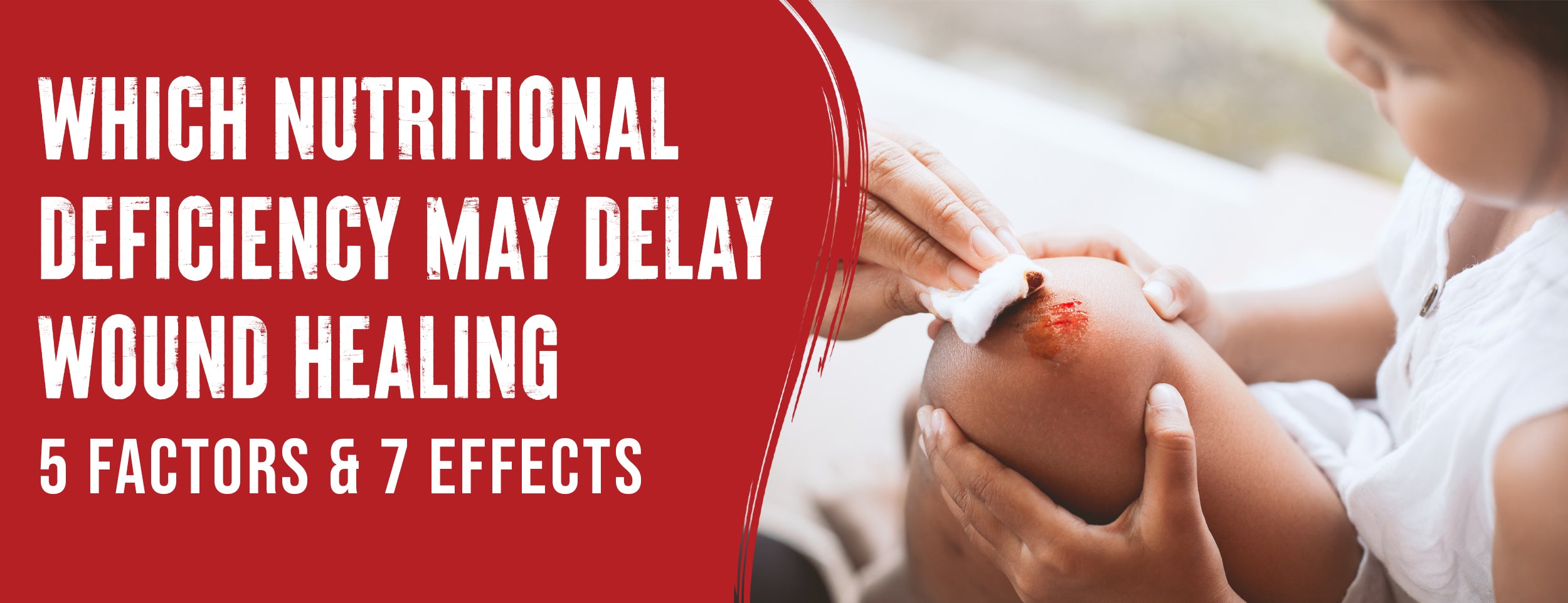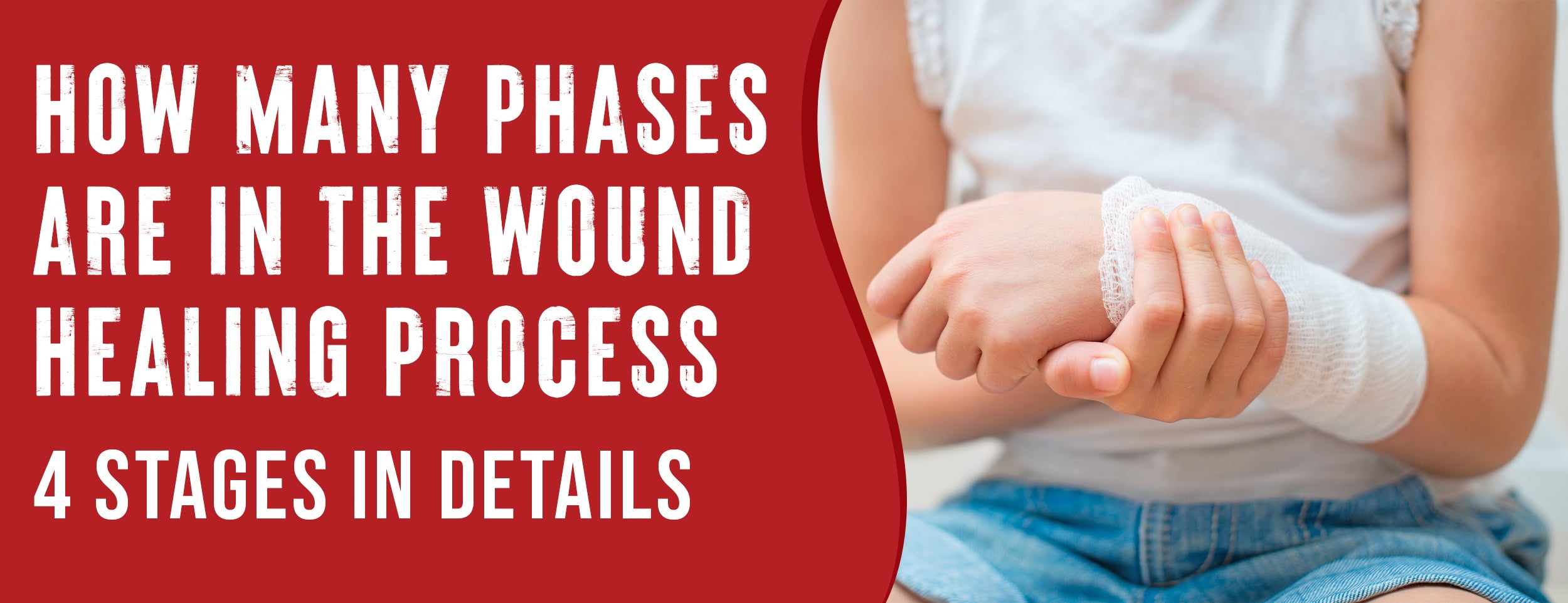Diabetic wound healing is slowed by high blood glucose levels because of reduced circulation and nerve damage in the extremities. Cellular activation and oxygen delivery are crucial for wound healing in diabetes.
Eating a balanced diet enriched with protein and essential vitamins such as vitamin D can significantly improve wound recovery. Certain foods can slow healing, affect the immune system, and exacerbate inflammation.
This blog post will discuss how specific foods and diet practices can significantly improve wound healing and what foods diabetics should avoid.
Diabetes Wound Healing And Nutrition: 5 Recommendations

Diabetes can make wound healing difficult. You can improve your health by eating a healthy diet. Here are some tips to enhance wound healing through diet.
Increase Consumption Of Lean Protein
Nutrition plays a crucial role in healing diabetes wounds. Controlling blood sugar levels and incorporating certain foods into one's diet can speed up healing. Protein is an essential nutrient.
Proteins are the body's building blocks and are vital in tissue repair and wound healing. Increased protein intake can support the body's natural healing process, which can be slowed by impaired blood flow.
Here are some reasons increasing lean protein consumption is critical for diabetes wound healing:
- Enhanced Wound Healing: Adequate lean protein intake speeds up wound healing by providing essential amino acids for tissue repair and cell regeneration.
- Complete Protein Sources: Opt for complete protein sources like lean meats, poultry, fish, eggs, dairy products, and soybeans to ensure you're getting a balanced array of amino acids.
- Recommended Intake: The EPUAP and NPUAP suggest 1.25–1.5 g/kg/day of protein. For example, a 150-lb male should aim for 85–102 g of protein/day to support effective diabetes wound healing and overall recovery.
Adding Eggs, Legumes, and Nuts to a Diabetes Diet

The health benefits of eggs, legumes, and nuts make them standard components of a healthy diet. These foods also provide essential nutrients to help diabetic wounds heal. These are some benefits of eggs, legumes, and nuts for diabetes:
Eggs
A nutritious food like eggs is one of the best things you can eat on this planet. The fish contain high-quality protein, omega-3 fatty acids, and essential vitamins and minerals. Adding eggs to a diabetes diet can help:
- Improve blood sugar levels: Eating eggs as part of a healthy diet can control blood sugar levels and prevent developing type 2 diabetes.
- Promote wound healing: Egg’s high protein content promotes the growth and repair of body tissues, including skin cells, helping to heal diabetes-related wounds.
Legumes
The legume plant provides plant-based protein, fiber, and essential vitamins and minerals. Adding legumes to the diet can help:
- Promote weight loss: Legumes are a low-calorie, high-fiber food that helps to promote satiety and reduce appetite. People with diabetes who wish to manage their weight better may find this helpful.
- Lower cholesterol levels: Consuming legumes can help lower LDL cholesterol levels, which may reduce the risk of heart disease.

Nuts
Nuts are an excellent source of unsaturated fats, fiber, and protein. Adding nuts to the diet can help:
- Reduce inflammation: Nuts are rich in antioxidants that help to reduce inflammation in the body, a common cause of many chronic diseases, including diabetes.
- Improve heart health: Lowering LDL cholesterol and eating nuts also lowers blood pressure and the risk of blood clots, which can improve heart health and reduce diabetes complications.
This diet can benefit people with diabetes while promoting wound healing. When making significant dietary changes, especially for diabetics, consult your healthcare provider first.
High-Fiber Fruits and Vegetables for Diabetes Wound Healing
Consuming fiber-rich fruits and vegetables can benefit people with diabetes, especially those with wound-healing challenges. These nutritious foods can benefit your health in the following ways:
- Improved Blood Sugar Control: Fiber, found only in plant foods regulates blood sugar levels. Soluble fiber slows down carbohydrate absorption, preventing blood sugar spikes. People with diabetes who want to manage their blood sugar levels better should choose fruits and vegetables high in fiber.
- Enhance Wound Healing: The fiber in fruits and vegetables that promote wound healing include cauliflower, carrots, broccoli, and Brussels sprouts. Fiber-rich foods help regulate blood sugar levels, enhancing tissue regeneration and repairing damaged cells.
- Improve Diabetes Control: High-fiber fruits and vegetables can improve diabetes control, making them essential to a well-balanced diabetic diet. Fiber in apples, bananas, oats, and avocados lowers blood sugar levels, reduces insulin resistance, and improves glucose metabolism.
- Manage Co-occurring Health Conditions: The fiber in fruits and vegetables helps manage co-occurring health conditions, such as high cholesterol and hypertension. Vegetables like bell peppers, cabbage, and potatoes contain antioxidants that lower blood pressure and prevent heart disease. At the same time, legumes like black beans and lima beans improve cholesterol levels.
Vitamins and Minerals for Diabetes Wound Healing

Diabetes patients need nutrition more than anyone. Dietary vitamin and mineral intake can help manage diabetes wound healing. Vitamins and minerals are recommended for diabetics:
Vitamin A
- This compound facilitates the growth and repair of body tissues, including the skin and blood vessels.
- It assists in preventing infections by boosting the immune system.
- It helps form collagen, which is necessary for proper wound healing.
Vitamin C:
- It is essential in synthesizing collagen, the skin's main structural component.
- Promotes wound healing by accelerating new tissue growth and blood vessel formation.
- They are reducing diabetes patient’s infection risk by boosting their immune systems.
Zinc:
- It produces collagen, an essential component of this plant, which plays a vital role in wound healing and tissue repair.
- Converts food into energy, providing the body with the necessary resources for wound healing.
- It has anti-inflammatory properties, reducing swelling and promoting healing.
Magnesium:
- Magnesium is necessary for the functioning of various enzymes that play a role in wound healing.
- Inflammation is also reduced, and blood sugar levels are regulated by it.
- Good sources of magnesium include dark chocolate, nuts, seeds, whole grains, and leafy greens.
Benefits of Working with a Dietician for Diabetes Wound Healing
Diabetes management relies heavily on nutrition to promote wound healing. Meal planning for diabetes patients can be challenging, especially if they have wounds that require special attention.
Dietitians and dieticians are essential to devising a personalized nutrition plan to aid wound healing and overall health. A dietician can help diabetes wounds heal in the following ways:
- Nutritional Plan: A dietitian can assess a diabetic patient’s nutritional needs for wound healing. Nutrient-rich foods, portion control, and hydration management may be recommended to optimize healing and prevent complications.
- Monitoring and Adjustment: A dietitian can monitor the progress of wound healing and adjust the nutritional plan accordingly. Medication changes, physical activity levels, and overall health status may change the needs of patients over time.
- Prevention of Complications: Diabetes wound care requires a dietitian's careful management of blood sugar levels. Infections, delayed wound healing, and other metabolic problems can occur with poorly controlled blood sugar levels. Nutritional interventions can facilitate healing wounds.
Consult with a registered dietitian if you have diabetes and a wound to learn more about working together to promote healing.

Foods to Avoid in Diabetes Wound Healing
The process by which your body processes glucose and blood sugar is affected by diabetes. A diabetic wound or foot ulcer is a slow wound-healing condition in people with diabetes. Nutrition is a key component of managing diabetes wounds.
Below are the subheadings about diabetes wound healing and nutrition.
Refined Carbohydrates And Added Sugars:
- Foods with refined carbohydrates can quickly raise blood sugar levels, causing inflammation and delaying wound healing.
- Sugars like high-fructose corn syrup, cane sugar, and honey can negatively affect wound healing and inhibit the immune system.
- Diabetes wound-healing foods to avoid include processed snacks, desserts, sugary drinks, fast food, and fried foods, which are often high in refined carbohydrates. Consume whole, nutrient-dense foods for excellent blood sugar management and wound healing.
Unhealthy Fats:
- Trans fats: These fats can increase inflammation and impair blood flow, which is essential for wound healing. A high saturated fat diet includes processed meats, fried foods, baked goods, and high-fat dairy products
- Omega-6 fats: Omega-6 fats contribute to overall health, but too much consumption can cause chronic inflammation. Foods high in omega-6 fats include vegetable oils like corn, soybean, and sunflower oil.
Processed Foods:

Processed foods are high in unhealthy fats, added sugars, and refined carbohydrates, making them a double-edged sword for people with diabetes.
- Sugar and refined carbohydrates in processed foods increase blood sugar levels and hamper diabetes wound healing.
- These foods also contain unhealthy fats, artificial ingredients, and preservatives that can compromise the immune system and delay healing.
- To support optimal glucose control and rapid wound healing in people with diabetes, it would be best to choose whole food options such as fruits, vegetables, lean proteins, and whole grains.
High Sodium Foods:
High sodium intake can cause fluid retention, which is especially problematic for people with diabetes. People with diabetes often experience swelling in their feet, leading to wounds and impaired healing.
- The recommended sodium intake is 2,300 mg daily, even lower for those with hypertension or kidney disease.
- Fluid retention can make wound healing harder when you eat a lot of sodium.
- Processed meats, canned soup, packaged snacks, and condiments like soy sauce and ketchup are foods to limit. Instead, choose fresh fruits and vegetables, lean protein, and whole grains to promote healing.
Conclusion
Managing diabetes is crucial to reducing the risks of wound complications. Eat a balanced diet of nutrients, vitamins, and minerals to speed healing.
Incorporating the recommended foods in your diet can improve your chances of recovering faster and managing diabetes. With a little effort and commitment, you can achieve optimal healing and live a fulfilling life.










![11 Types & 7 Benefits of Wound Ointments [Most Effective]](http://drnumb.com/cdn/shop/articles/What_Ointment_Is_Best_For_Wound_Healing__14_Types_7_Benefits.jpg?v=1716200317)




